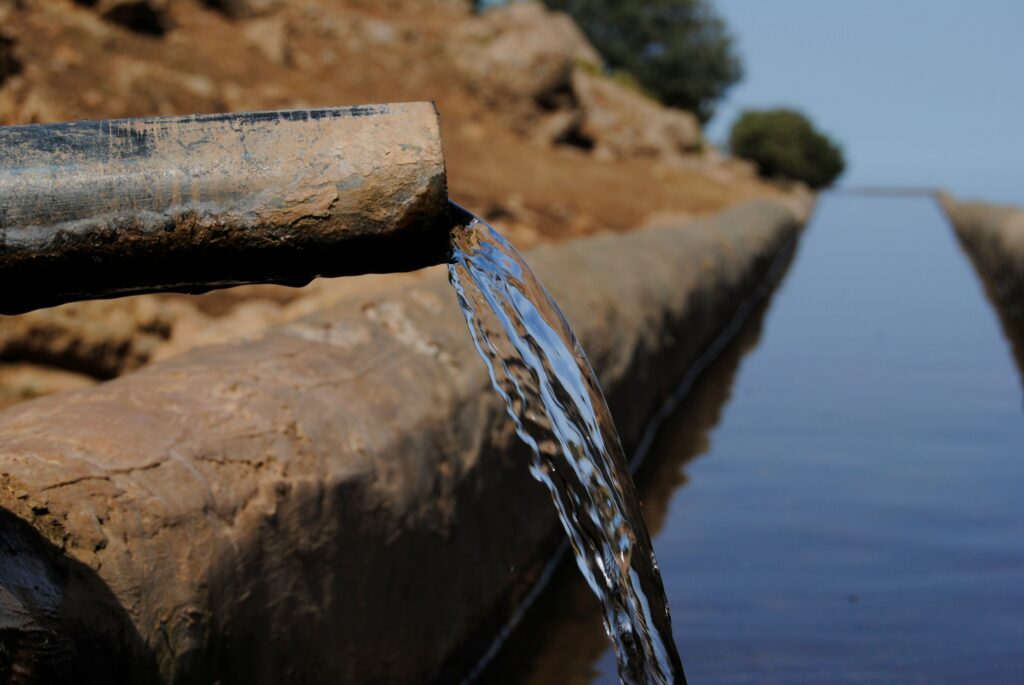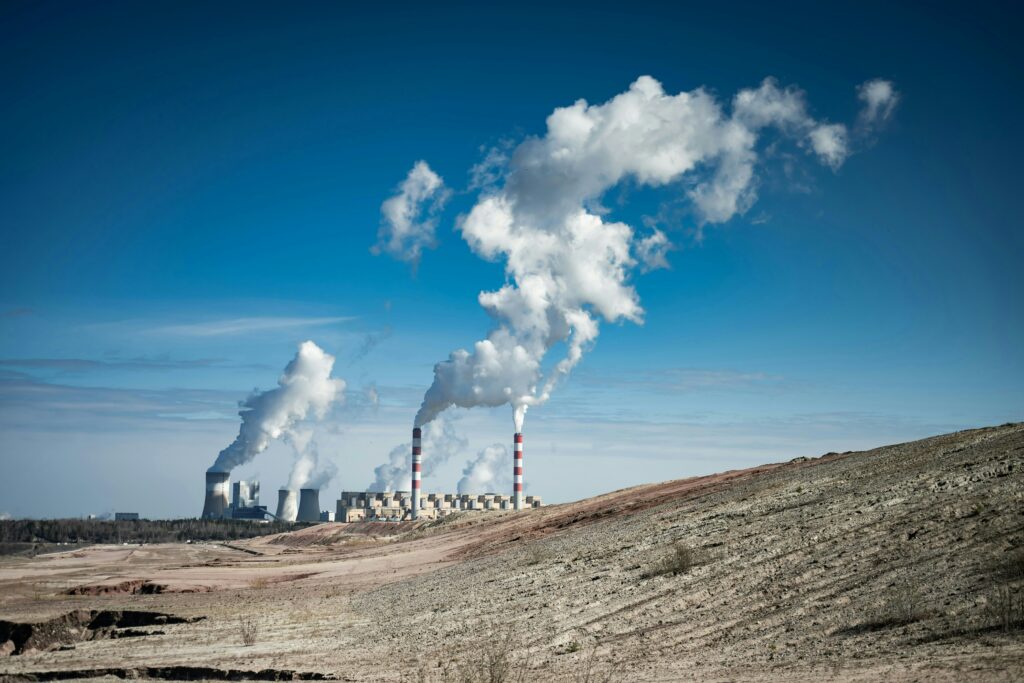Water and Energy Security in a Warming Europe

As AI and renewables surge, Europe must link water, energy, and digital policy to secure a resilient, sustainable future.
AI, data centers, and droughts are reshaping Europe’s water future, energy security, and climate resilience.
Artificial intelligence (AI), clean energy, and water scarcity are reshaping Europe’s sustainability landscape. Dr Maria Kotari, founder of The Energy Matrix and former advisor to the EU and United Nations, discusses how water and energy security are increasingly intertwined. With over 15 years of experience across public institutions, academia and consultancy, she reflects on the delicate balance between innovation, policy, and ecosystems. In this conversation, she speaks about Europe’s growing water crisis, AI’s double-edged role in managing it, and why slowing down may be the fastest way toward resilience.
You recently attended the Danish Presidency’s Conference for Mission Ocean as part of your role as Principal Consultant at Technopolis Group. What were your impressions?
Indeed, it was an insightful experience. The conference focused on the EU Mission: Restore our Ocean and Waters initiative under the European Commission, which aims to restore ocean and water ecosystems. What struck me most was Denmark’s integrated approach to the shared use of maritime space.
During my visit, I toured an offshore wind farm and learned from scientists studying how installations affect bird and marine populations. Interestingly, these structures can sometimes support seabed restoration, or even provide habitats for mussel farming. Seeing how renewable energy and ecosystem services can coexist, and even benefit one another, was a revelation, a real-world example of how the green transition and biodiversity goals can align for mutual gain. It also showed the importance of long term monitoring, so early wins translate into durable ecological benefits.
Since we’re on the topic, how secure is Europe’s water future right now? Are we in trouble?
Unfortunately, the data suggests we are. Climate change has intensified both droughts and floods across Europe, even in countries like the Netherlands, where water scarcity was once unthinkable. Consecutive dry years such as 2022 and 2024 have exposed vulnerabilities in a system that long took water abundance for granted.
At the same time, extreme rainfall is triggering severe floods, as we saw in Germany in 2021. These dual pressures are stretching ecosystems and human infrastructure alike. Agriculture remains the largest consumer of water, but the problem extends far beyond farms. Industry, tourism, and even drinking water supplies are increasingly at risk.
So yes, Europe’s water future looks uncertain. That does not mean it is hopeless, however. Awareness, better forecasting, diversified storage, and stronger cross sector collaboration will be crucial. We also need pricing and governance reforms that reward efficiency without compromising access.
Agriculture is one of the sectors most exposed to this. Is that also where citizens will notice water stress first?
Agriculture is indeed the most visible front line because it directly affects food prices and availability. But the impacts go deeper, they touch the very identity of European societies.
Take the Netherlands, where water is part of the country’s DNA. Yet in recent years, canals that once froze in winter, inspiring paintings of ice skaters, now rarely do. The landscape and traditions are literally changing before our eyes.
So while rising food prices might be the most immediate signal for consumers, shifts in everyday life, culture, and recreation will make water stress tangible for everyone. Cities will also feel it through heat island effects, groundwater drawdowns, and stricter summer restrictions.

In the past, water management often meant fixing leaks or building new dams. How is AI changing that today?
There are several important elements to discuss here. First, there is a growing need for AI, smart meters, and data monitoring systems. We can clearly see the innovative and positive potential of applying AI in water management, a development that is both necessary and timely. The sooner such technologies are implemented, the better, especially given the increasingly concerning situation of water scarcity across Europe.
Implementing AI-driven solutions would allow authorities and all stakeholders involved in water management to improve predictability, monitor data in real time, and make timely adjustments. This proactive approach could help prevent severe water shortages that not only disrupt industries and supply chains but also threaten essential human needs.
This issue is particularly relevant for Mediterranean countries, which have already faced significant water shortages. In many cases, local supplies have struggled to meet both the needs of residents and the seasonal surge in population during the summer due to tourism.
Indeed, technology can be a key tool for more efficient and sustainable water management. However, as with any innovation, there is another side to the coin, challenges and complexities that must also be carefully considered.
Some call AI a lifeboat for sustainability, others an iceberg. Which side are you on?
I prefer to stay neutral and analytical. AI is both, it can be a tool for resilience or a source of new pressures, depending on how it is used.
We know that energy production has always depended heavily on water, whether for hydropower, nuclear cooling, or fossil fuel processing. Renewables like solar and wind use far less water, which is positive. But technologies such as biomass, hydropower, or even carbon capture and storage can increase water demand dramatically, in some cases significantly.
Then there is the digital layer. Data centres, which power AI systems, consume vast amounts of electricity and require water for cooling. Many rely on potable water that evaporates during the process. So even digital innovation has a physical footprint on our freshwater systems. The challenge is to decouple digital growth from water intensity through standards, siting, and technology choices.

Are data centres really using drinking water for cooling? Can that water not be reused?
Yes, many do rely on treated freshwater because cooling systems require water of a certain purity to avoid corrosion and scaling. Using industrial or recycled water requires additional treatment infrastructure that not every country currently has.
Once used for cooling, much of this water evaporates, so it is not returned to the source. Some facilities are experimenting with water reuse technologies, but these remain limited in scale. This creates a policy gap, we need stronger incentives and clearer standards for water efficient, climate appropriate cooling methods across Europe. Closed loop or air-cooled systems, heat recovery to district networks, and mandatory transparency on water use would all help.
Are there any innovative examples of more sustainable cooling systems?
A promising case comes from the Netherlands. Google partnered with the Dutch company North Water to cool its data centre in Groningen using canal water instead of drinking water. It is a great example of collaboration between tech and water management sectors.
The Netherlands has an advantage because of its long experience managing water in a country that sits largely below sea level. But the principle can be applied elsewhere, pair technological innovation with local water expertise, map seasonal availability, and design with redundancy. Public reporting builds trust that these systems protect potable supplies.
Some activists say, “your cloud dries out my river.” Are local protests against data centres justified?
Public concern is understandable. Large facilities can strain local water and energy supplies, especially in regions already facing scarcity. But the picture is complex, such projects also bring jobs, investment, and digital infrastructure.
The real solution lies in transparency and impact assessments. Every major installation, whether a factory, a mine, or a data centre, should undergo rigorous environmental and water use evaluation before construction. These studies take time, but they are essential for fair, evidence based decision making. Science should guide development, not the other way around. Community benefit agreements and ongoing monitoring can align local interests with national priorities.
Europe is racing to expand renewables, grids, and raw material supply chains. How can it balance speed with sustainability?
That is the heart of the challenge. The clean energy transition is urgent, climate change will not wait, but rushing without system thinking can create new inefficiencies or even harm.
We have seen solar and wind projects stalled because electricity grids were not ready to absorb the new capacity. Similarly, mining critical raw materials for renewables consumes water and can impact ecosystems if not managed carefully.
So my philosophy is, move slow to move fast. Taking time to base actions on sound science, thorough assessments, and long term planning will make the transition more durable. Build grids and storage alongside generation, require water smart designs for industry and data, and coordinate permits across sectors to avoid bottlenecks.
Policymakers are beginning to understand that sustainability is not just about innovation, but about efficiency, foresight, and balance. Initiatives such as the EU Resilience Strategy and upcoming AI and Energy Efficiency frameworks show that water and digital policy are starting to converge.
Science and dialogue, like this one, help us see the full picture. If we keep combining evidence with empathy, then I believe Europe can build a resilient, fair, and sustainable water future.
The views expressed in this interview are her own and reflect her professional experience and interpretation of current evidence. Some of the data and insights discussed are also informed by the European Parliament foresight study Kottari co-authored with colleagues at Technopolis Group, “The future of water availability and use in the EU: A foresight study and policy options to address water scarcity.”